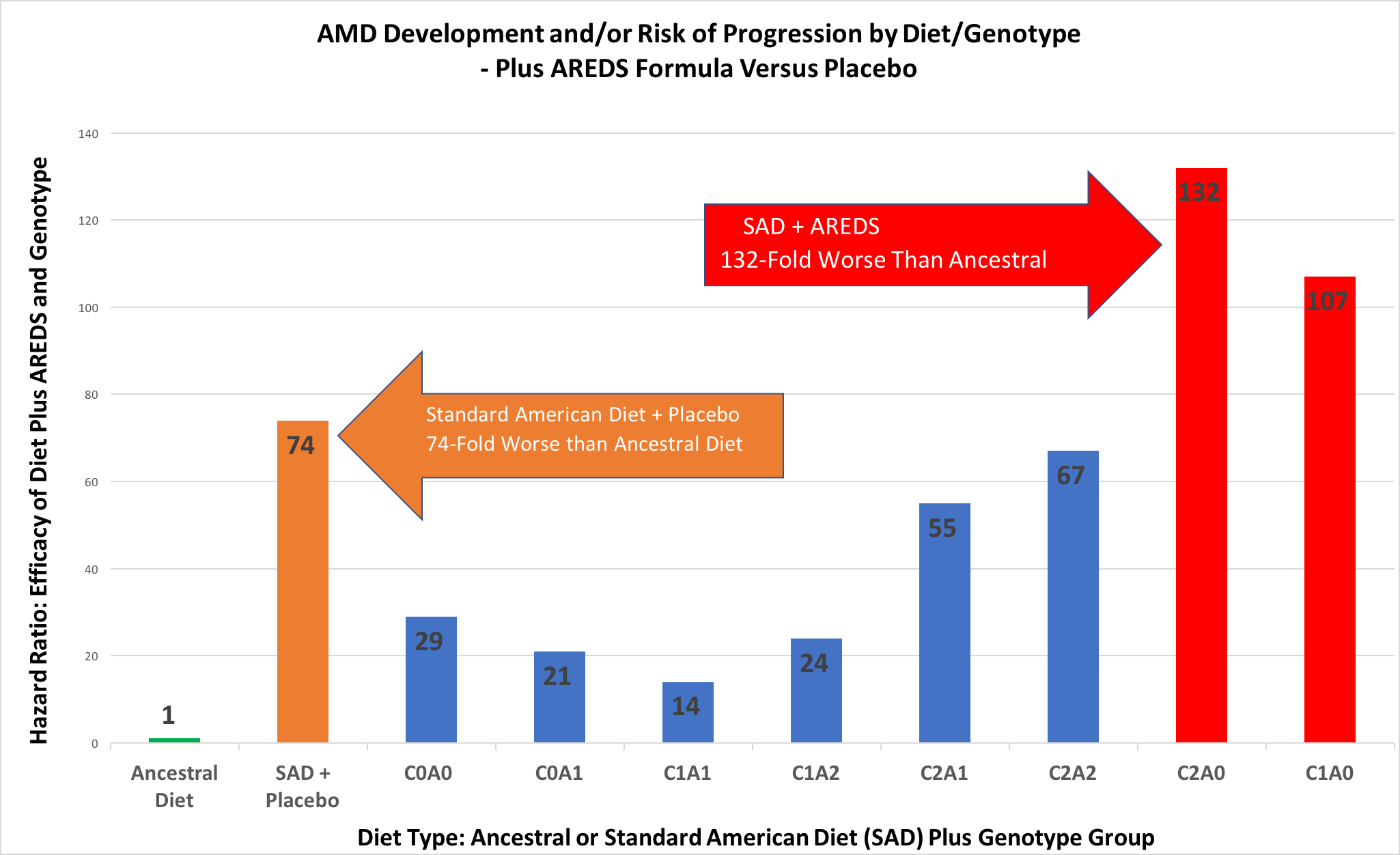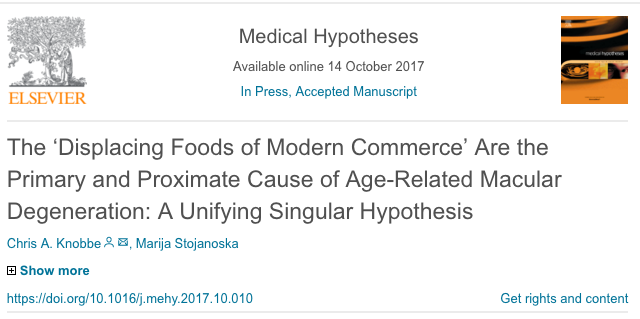What are the consequences of these dietary changes? Well, we see a drastic increase in “diseases of Western civilization,” including obesity, hypertension, metabolic syndrome, and, of course, macular degeneration, as reviewed in Part Six.
Here’s a typical headline – and this one happens to come from The Japan Times.

This one from GoodFoodWorld.com…

And this one from CNN.com…

Consequences of Dietary Changes
Furthermore, a great deal of research has focused on the fact that the Japanese have developed a drastically higher prevalence of chronic, metabolic diseases, primarily over the past four decades. For example, a paper published in the Asia Pacific Journal of Clinical Nutrition, in 2002, duly noted this drastic increase in chronic, metabolic diseases in Japan. They wrote that the Japanese have experienced a “rapid increase in incidences of obesity-associated chronic diseases such as diabetes, hypertension and hyperlipidemia [abnormal blood lipids].” 81
And because Asians generally have very lean and “slim” physiques, the Japan Society for the Study of Obesity (JASSO) determined that it was more appropriate to define obesity as Body Mass Index (BMI) of greater than or equal to 25 (kg/m2), rather than the U.S. cut-off, of 30.81
Given the criteria, the same study found that in the forty-year period between approximately 1962 and 2002, obesity prevalence in Japan increased four-fold in men over 30 years old and three-fold in women over 40 years of age. And at the time of this study (2002), obesity in the Japanese was at an all-time high of 20 percent.81
In the last 40 to 50 years, numerous Western fast-food restaurants have populated Japan.

In nation after nation, population after population, the people Westernize their diets with the likes of refined white flour, refined (added) sugars, polyunsaturated vegetable oils, and trans fats, which all come from man-made, processed, nutrient-deficient, and even toxic food components. Yes, toxic.
Then, within a few years, the people are becoming ill. They’re developing dental decay, children grow up with crooked teeth, cavities develop, and even dental abscesses (in adults, generally), which is then followed by other chronic, degenerative diseases, including:
- Type 2 diabetes
- Hypertension (high blood pressure)
- Metabolic syndrome (visceral obesity, abnormal blood lipids, insulin resistance/pre-diabetes)
- Obesity
- Autoimmune diseases (like rheumatoid arthritis, lupus, multiple sclerosis, etc.)
- Cancers of epithelial origin primarily
- Heart disease
- Stroke
- Alzheimer’s disease
- Dementia, and more…
And then the governments, major preventive healthcare entities, healthcare dictocrats, and scientists seem to be scratching their heads, wondering what happened.
Of course, now we have the data to support the hypothesis that AMD is caused by the exact same thing, i.e., man-made, processed, nutrient-deficient and toxic diets, which not only lead to all of this chronic, metabolic disease, but AMD as well.
As previously alluded to, our scientific paper on this research is now published in the prestigious journal, Medical Hypotheses, which is an Elsevier, peer-reviewed publication. My colleague and co-author in this research, Marija Stojanoska, MSc, from Macedonia, are extremely proud of this paper, which for me at least, was six years in the making.
To access our paper at the journal online, Click Here.
With that understanding…
Now that we’re (hopefully) a little closer to “being on the same page,” let’s return to the research submitted by Carl Awh, M.D. and ArcticDx, regarding their data.
Despite all of the contention regarding Awh’s research, I believe that there is merit to their position that genetics does indeed play a role in regard to either the benefits or the harm caused by the AREDS synthetic vitamin formula. And indeed, as you may recall, Johanna Seddon, M.D., of Tufts University in Boston, who has contributed more towards nutrition and AMD over the last 25 years than probably any other previous researcher, also found and agreed that genetics is important in supplementation decisions. To reiterate, her paper stated:
“The effectiveness of antioxidant and zinc supplementation appears to differ by genotype. Further study is needed to determine the biological basis for this interaction.70
So where is the big problem, you ask?
Recall that I previously intimated that the single greatest problem with the AREDS study and data is that there was no consideration or analysis of diets? And if I didn’t come right out and say it, did I mention that this is really an oversight of colossal proportions?
Once again, this is the case, because the entire cohort of participants for the study was drawn from the U.S. population. And guess what the enormous majority of the population in the U.S. is consuming for a diet?
The answer? The Standard American Diet (SAD), with the appropriately named acronym.
We know, as previously reviewed, that at least 63% of the American (U.S.) diet is composed of refined grains (mostly wheat), refined and added sugars, polyunsaturated vegetable oils, and trans fats, right? And please recall that these are almost entirely nutrient-deficient foods.
So the so-called “Placebo” group, which received pills of no consequence, was already in the experimental group, right?
In other words, they’re already consuming the very diet that, as Marija Stojonoska and I have shown, is associated with macular degeneration development in the first place.
We know this – well – if you were to review all of our data and correlations from 25 nations – and so, if we compare the U.S. population’s risk of AMD to that of the Pacific Islanders from either the Solomon Islands, Samoa, or Kiribati, then we understand that the approximate, relative risk of developing AMD in the U.S., compared to these three island nations, is 74-fold greater.
Knowing this, we can rename the “Placebo” group in the AREDS trial histogram (table) as the “SAD” group, and instead of assigning their relative risk as 1.0, as the ArcticDx group did, we can assign their risk as 74 – because the risk in the SAD group from the U.S. is 74-fold greater than those consuming a relatively native, traditional (Ancestral) diet, in the Solomon Islands, for example, whose relative risk would then be 1.
In other words, the U.S. diet (SAD) causes a relative risk of AMD that is 74-fold greater than an ancestral diet (let’s call this category, “Ancestral Diet”), practiced in the Pacific Island nations (Solomon Islands, Samoa, and Kiribati) studied, right?
Now, let’s look at the data again, and re-plot the data with the “SAD” group at relative risk of 74, and the “Ancestral” group at relative risk of 1. Next, we’ll throw in the genetic and supplement categories, re-assigned with their respective risk based on genetics and consumption of the AREDS vitamin/mineral formula. Now what we have is this:

For me, a picture (or graph) is worth a thousand words. But, I know this isn’t the case for everyone. So for those who want the explanation in words, here goes:
Ancestral Diet vs. Standard American Diet and AMD
If we look at the “Ancestral Diet” category, we see that the relative risk of developing AMD is 1.0, as compared to the Standard American Diet (SAD), which is 74. Alternatively stated, as compared to the Ancestral Diet, the relative risk of developing AMD with the SAD diet is 74-fold greater.
Now, in the best possible scenario, for the segment of the population that has the C1A1 genetic combination, which was 22.6% of the population,55 if you consumed the SAD diet and took the AREDS formula, your risk of progression of AMD was approximately 14-fold higher than those in the “Ancestral Diet” group. This is the best possible scenario if you’re consuming the SAD diet, have the “best” genetic profile, and consume the AREDS formula regularly.
In the worst-case scenario, for those who have the C2A0 genetic combination, which was 13.2% of the population, and who also consume the SAD diet and take the AREDS formula,55 the risk of AMD progression for that category is 132-fold greater, approximately, than those people consuming the “Ancestral Diet.”
So to summarize, if you’re consuming the SAD diet and take the AREDS formula, in the best possible circumstances, your risk of AMD development/progression is about 14-fold higher than if you consumed an Ancestral Diet. In the worst-case scenario, if you’re consuming the SAD diet and take the AREDS formula, your risk of AMD development/progression is about 132-fold greater than if you consume an Ancestral Diet.
Surely this makes the decision a “no-brainer,” right?
Conclusion: Which are the “Best Eye Vitamins”?
In a nutshell, the answer to this question is that the “best eye vitamins” are the vitamins contained in ancestral diets, that is, those vitamins contained in whole, natural, unprocessed foods, of both plant and animal origin, and which are preferably organic in nature.
Only in whole foods are the vitamins in the right proportions and context, associated with all the correct co-factors including minerals, enzymes, phytonutrients, polyphenols, etc., and the most bio-available.
But let’s ask and answer several questions based on this article and the data presented…
First, which is better: the Standard American Diet (SAD, or Westernized diet) or an Ancestral Diet in terms of preventing AMD?
The answer: Based on our research, the risk of AMD development is approximately 74-fold higher with the SAD/Westernized diet versus an ancestral diet, at least if we’re comparing the U.S. data to that of the Pacific Islanders studied.
Second, which is better in terms of preventing AMD development/progression: the SAD diet plus AREDS formula supplements, or the Ancestral Diet?
The answer: Based on our research, in the best possible scenario (for those consuming a SAD diet), the Ancestral Diet is still 14-fold better, and in the worst possible scenario, the SAD (Westernized) diet is 132-fold worse than an ancestral diet.
Third, should vitamin supplements, such as the AREDS formulae, be the primary focus of treatment for dry AMD?
The answer: Absolutely not. Not even close. In my opinion, synthetic vitamin supplements should generally not be consumed, except in unusual circumstances.
In general, one absolutely must remember that synthetic multivitamins are likely to make your health worse and cause your earlier demise. This is a fact, proven by the Cochrane meta-analyses – and is inarguable.
Keep in mind that the AREDS formula is a multivitamin. Perhaps worst of all, consuming these might make you think you’re doing something good while you continue to consume the very foods that caused your AMD in the first place (if indeed you do already have AMD).
See the full list of references here.
______
This is Part Seven of an eight-part series.
______
Part 1: Are the Best Vitamins for Macular Degeneration Synthetic?
Part 2: The History of Vitamins
Part 3: Vitamins and AMD
Part 4: Vitamins, AMD, and The Effects of Supplementation
Part 5: Vitamin Studies for AMD (AERDS)
Part 6: Diet and AMD Prevalence
Part 8: Coming soon


